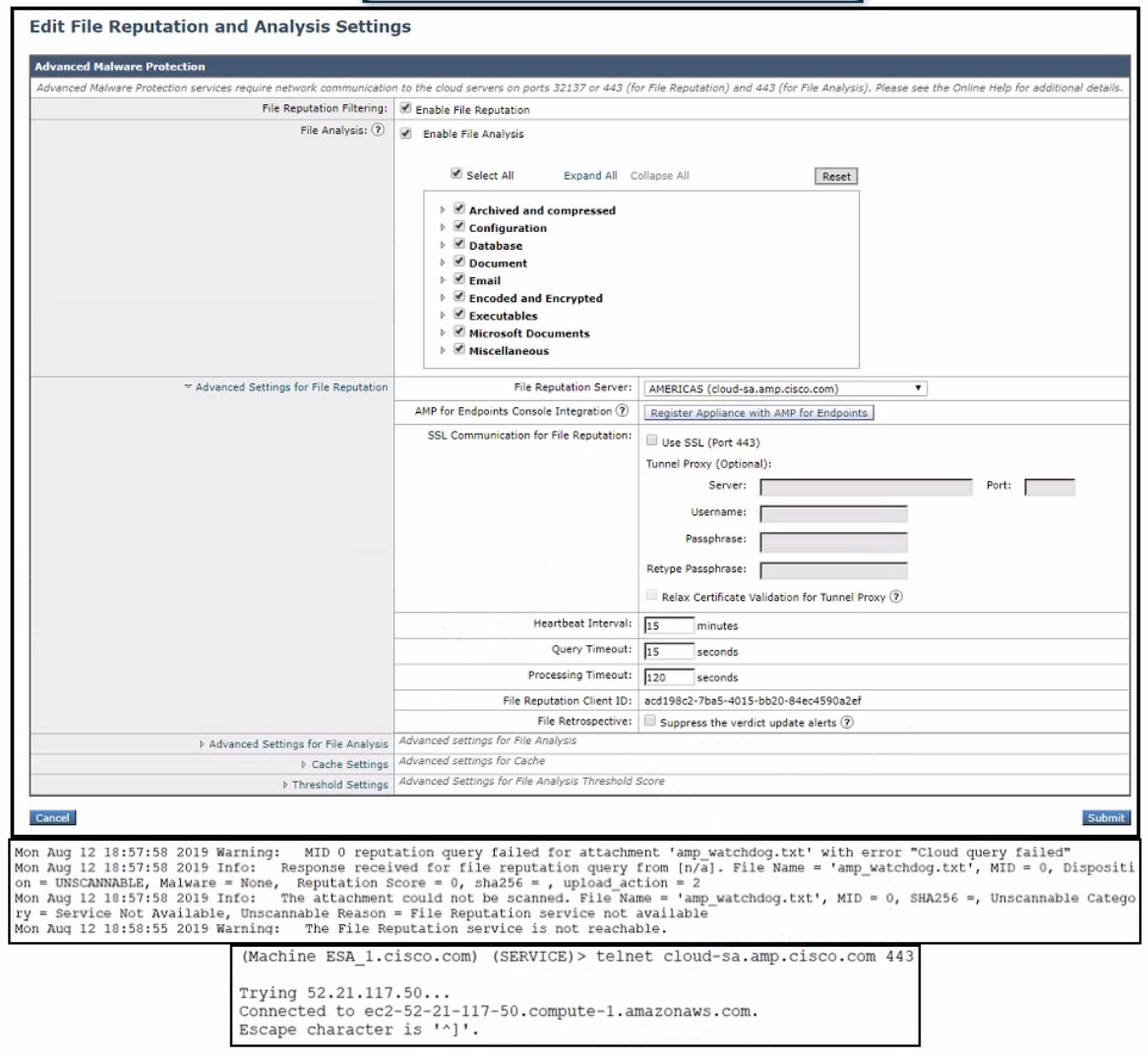Most Recent Cisco 300-720 Exam Dumps
Prepare for the Cisco Securing Email with Cisco Email Security Appliance exam with our extensive collection of questions and answers. These practice Q&A are updated according to the latest syllabus, providing you with the tools needed to review and test your knowledge.
QA4Exam focus on the latest syllabus and exam objectives, our practice Q&A are designed to help you identify key topics and solidify your understanding. By focusing on the core curriculum, These Questions & Answers helps you cover all the essential topics, ensuring you're well-prepared for every section of the exam. Each question comes with a detailed explanation, offering valuable insights and helping you to learn from your mistakes. Whether you're looking to assess your progress or dive deeper into complex topics, our updated Q&A will provide the support you need to confidently approach the Cisco 300-720 exam and achieve success.
The questions for 300-720 were last updated on May 7, 2025.
- Viewing page 1 out of 29 pages.
- Viewing questions 1-5 out of 147 questions
An engineer wants to utilize a digital signature in outgoing emails to validate to others that the email they are receiving was indeed sent and authorized by the owner of that domain Which two components should be configured on the Cisco Secure Email Gateway appliance to achieve this? (Choose two.)
Public/Private keypair. A public/private keypair is a pair of cryptographic keys that are used to generate and verify digital signatures. The private key is used to sign the email message, while the public key is used to verify the signature. The public key is published in a DNS record, while the private key is stored on the Cisco Secure Email Gateway appliance[1, p. 2].
Domain signing profile. A domain signing profile is a configuration that specifies the domain and selector to use for signing outgoing messages, as well as the signing algorithm, canonicalization method, and header fields to include in the signature. You can create multiple domain signing profiles for different domains or subdomains[1, p. 3].
The other options are not valid because:
A) DMARC verification profile is not a component for utilizing a digital signature in outgoing emails. It is a component for verifying the authenticity of incoming emails based on SPF and DKIM results[2, p. 1].
B) SPF record is not a component for utilizing a digital signature in outgoing emails. It is a component for validating the sender IP address of incoming emails based on a list of authorized IP addresses published in a DNS record[3, p. 1].
E) PKI certificate is not a component for utilizing a digital signature in outgoing emails. It is a component for encrypting and decrypting email messages based on a certificate authority that issues and validates certificates[4, p. 1].
Refer to the exhibit.

An administrator has configured File Reputation and File Analysis on the Cisco Secure Email Gateway appliance however it does not function as expected What must be configured on the appliance for this to function?
To enable File Reputation and File Analysis on the Cisco Secure Email Gateway appliance, the administrator must configure the appliance to use SSL for the connection to the File Reputation server. This will ensure that the communication between the appliance and the cloud service is secure and encrypted. The administrator must also upload a valid certificate from a trusted CA on the appliance for this purpose. The other options are not required or effective for this task.Reference: [Cisco Secure Email Gateway Administrator Guide - Configuring File Reputation and File Analysis]
An engineer is testing mail flow on a new Cisco ESA and notices that messages for domain abc.com are stuck in the delivery queue. Upon further investigation, the engineer notices that the messages pending delivery are destined for 192.168.1.11, when they should instead be routed to 192.168.1.10.
What configuration change needed to address this issue?
Which components are required when encrypting SMTP with TLS on a Cisco Secure Email Gateway appliance when the sender requires TLS verification?
To encrypt SMTP with TLS on a Cisco Secure Email Gateway appliance when the sender requires TLS verification, the components that are required are an X.509 certificate and matching private key from a CA. The certificate must be signed by a trusted CA and contain the domain name or IP address of the listener in the Subject or Subject Alternative Name fields. The private key must be unencrypted and match the certificate.Reference: [Cisco Secure Email Gateway Administrator Guide - Configuring TLS]
Which SMTP extension does Cisco ESA support for email security?
STARTTLS is an SMTP extension that allows email servers to negotiate a secure connection using TLS or SSL encryption. Cisco ESA supports STARTTLS for both inbound and outbound email delivery.
Unlock All Questions for Cisco 300-720 Exam
Full Exam Access, Actual Exam Questions, Validated Answers, Anytime Anywhere, No Download Limits, No Practice Limits
Get All 147 Questions & Answers